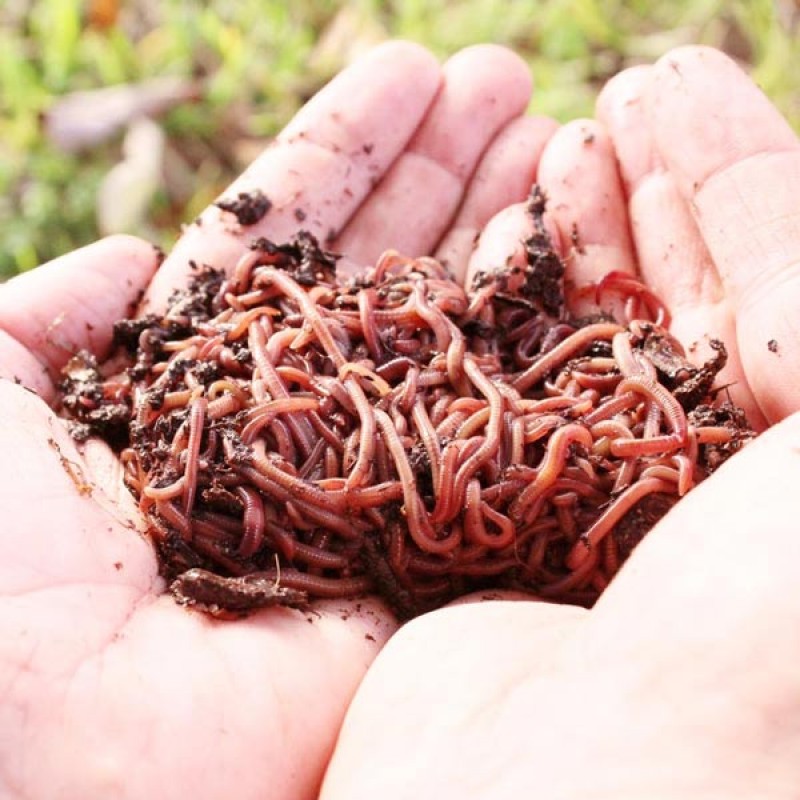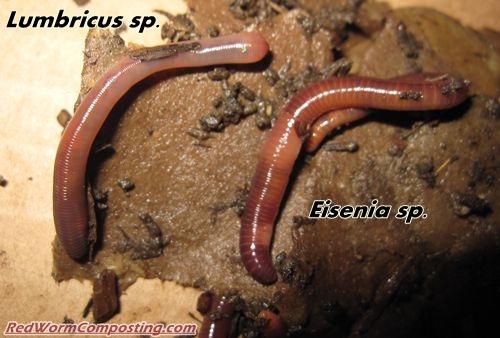Recognizing the Advantages of Red Wiggler Composting: How This Efficient Approach Changes Organic Waste Into Nutrient-Rich Soil Amendments
Red Wiggler composting, utilizing the varieties Eisenia fetida, offers an engaging technique to organic waste administration, converting kitchen area scraps and backyard particles into important dirt modifications. This approach not just improves soil fertility yet additionally addresses pushing ecological issues, consisting of garbage dump waste decrease and greenhouse gas exhausts.
What Are Red Wigglers?
Red wigglers, scientifically known as Eisenia fetida, are a species of earthworm that play a crucial function in vermicomposting systems. These worms are characterized by their reddish-brown shade, segmented bodies, and a distinct ability to flourish in organic-rich atmospheres, making them optimal for composting applications - Red Wiggler Composting. Unlike their garden-dwelling counterparts, red wigglers prefer to occupy the upper layers of soil, where rotting issue is abundant
Normally gauging in between 3 to 4 inches in length, red wigglers have a high reproductive price, enabling them to multiply quickly under ideal conditions. They possess a special digestive system that enables them to refine natural waste effectively, converting it into nutrient-rich castings, which are extremely advantageous for plant development.
Their resistance to varying moisture levels and temperature ranges further improves their utility in vermicomposting setups, making them a preferred choice among composting lovers. Additionally, red wigglers are cardiovascular organisms, which necessitates a well-aerated composting atmosphere, ensuring effective decay. Comprehending the organic attributes and behaviors of red wigglers is essential for maximizing their use in lasting waste monitoring techniques.

Advantages of Vermicomposting
Utilizing the power of vermicomposting offers a wide range of agricultural and environmental benefits. It substantially lowers organic waste in land fills, consequently reducing methane emissions, a potent greenhouse gas. By drawing away food scraps and lawn waste to vermicomposting, we support a more sustainable waste monitoring system.
In addition, vermicomposting boosts dirt wellness. The castings produced by red wigglers are abundant in necessary nutrients, microorganisms, and enzymes, enhancing dirt structure and fertility. This nutrient-rich modification advertises durable plant growth and enhances water retention, minimizing the need for chemical fertilizers.
Moreover, vermicomposting fosters biodiversity in the dirt ecosystem. The intro of beneficial bacteria from worm spreadings help in illness suppression and nutrient cycling, creating a healthier environment for plants.
Financially, vermicomposting minimizes the expenses associated with chemical inputs and waste disposal. Gardeners and farmers can cultivate premium produce at lower expenditures, adding to food security and sustainability.
Just How to Beginning Composting
Beginning a composting endeavor can be a uncomplicated and gratifying procedure. This will help keep a balanced temperature, crucial for the composting procedure.
Collect organic products such as kitchen scraps, yard waste, and shredded paper. Go for a balanced mix of 'eco-friendly' products, high in nitrogen (e.g., fruit scraps, coffee premises), and 'brown' materials, rich in carbon (e.g., dried fallen leaves, cardboard) A ratio of approximately 2:1 green to brown materials is suitable.
Beginning layering your materials, making certain sufficient air blood circulation by transforming the stack regularly. This promotes cardiovascular decomposition, speeding and decreasing odors up the procedure. Display dampness levels; the garden compost ought to feel like a damp sponge however not overly damp.
Nutrient Profile of Vermicompost
Composting, especially with red wigglers, produces a nutrient-rich product understood as vermicompost. In addition, it provides trace elements like magnesium, iron, and calcium, promoting durable plant growth and boosting soil health and wellness.
The microbial activity present in vermicompost additionally improves its account, presenting advantageous germs and fungis that advertise nutrition schedule and uptake in plants. This biological component aids in reducing plant conditions and improving dirt structure, resulting in boosted water retention and oygenation.

Ecological Influence of Composting
The environmental influence of composting, especially through using red wigglers, is profound and diverse. This method dramatically lowers the volume of natural waste sent out to land fills, which in turn reduces greenhouse gas discharges, particularly methane-- a potent factor to climate adjustment. By drawing away organic products from garbage dumps, red wiggler composting not just assists alleviate ecological deterioration however likewise promotes lasting waste administration practices.

Additionally, composting adds to carbon sequestration, as the process records co2 from the atmosphere and hop over to these guys shops it in the dirt. This natural procedure help in combating environment modification while enriching the soil - Red Wiggler Composting. On the whole, red wiggler composting offers a sensible, green service for waste management and environmental sustainability, promoting healthier ecological communities and a much more lasting future
Verdict
In final thought, Red Wiggler composting offers as an effective technique for transforming natural waste right into beneficial soil changes. The procedure not only enhances soil fertility and structure yet likewise reduces environmental problems linked with waste disposal.
Red Wiggler composting, using the types Eisenia fetida, offers a compelling approach to natural waste administration, converting kitchen area scraps and backyard debris into valuable soil amendments. Unlike their garden-dwelling equivalents, red wigglers like to inhabit the top layers of dirt, where rotting issue is bountiful.
The spreadings generated by red wigglers are abundant in vital nutrients, microbes, and enzymes, enhancing dirt structure and fertility. The nutrient-rich by-products of red wiggler activity enhance soil framework, boost water retention, and advertise biodiversity helpful resources within the dirt ecological community.In conclusion, Red Wiggler composting serves as a reliable method for converting organic waste right into beneficial soil amendments.